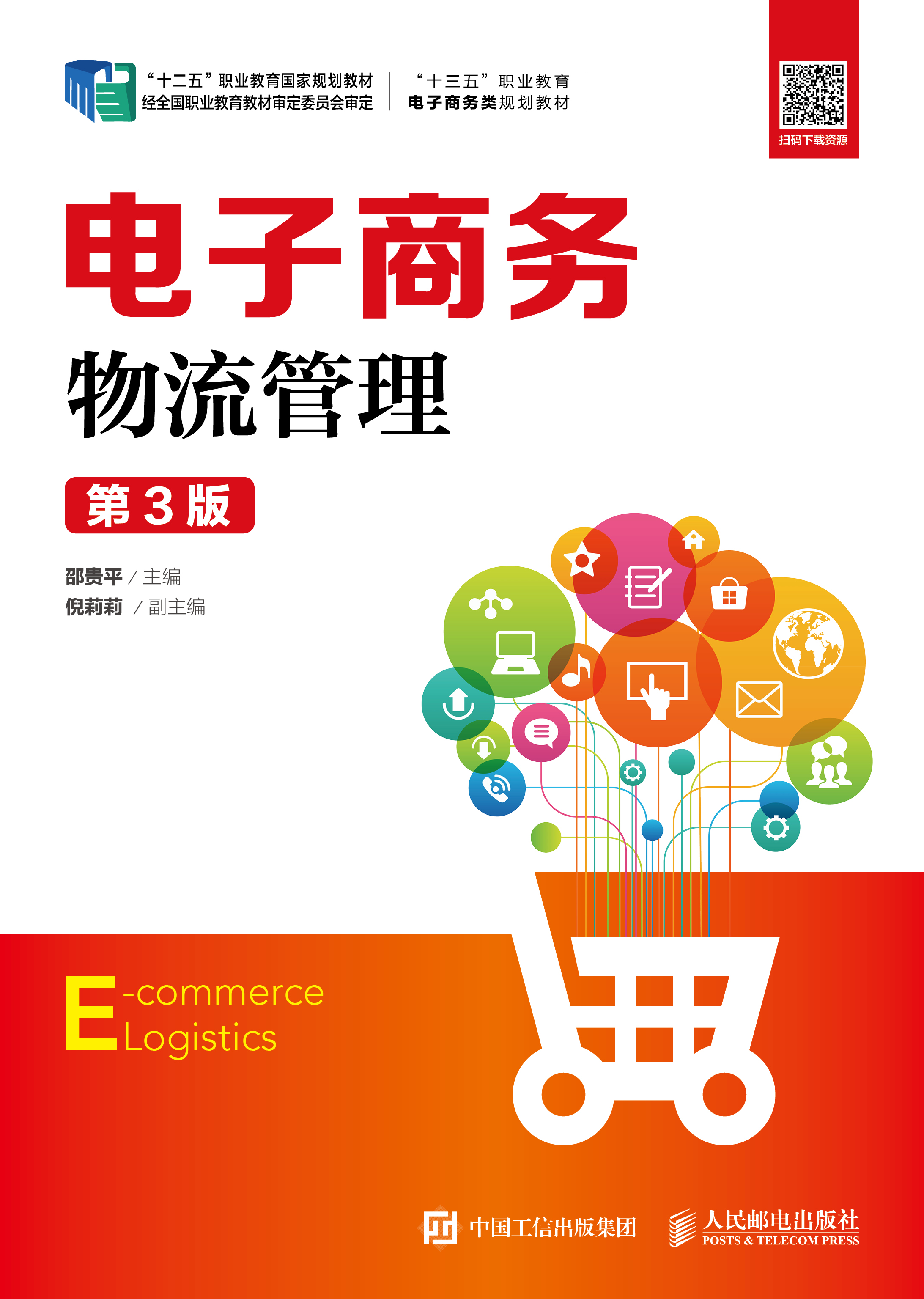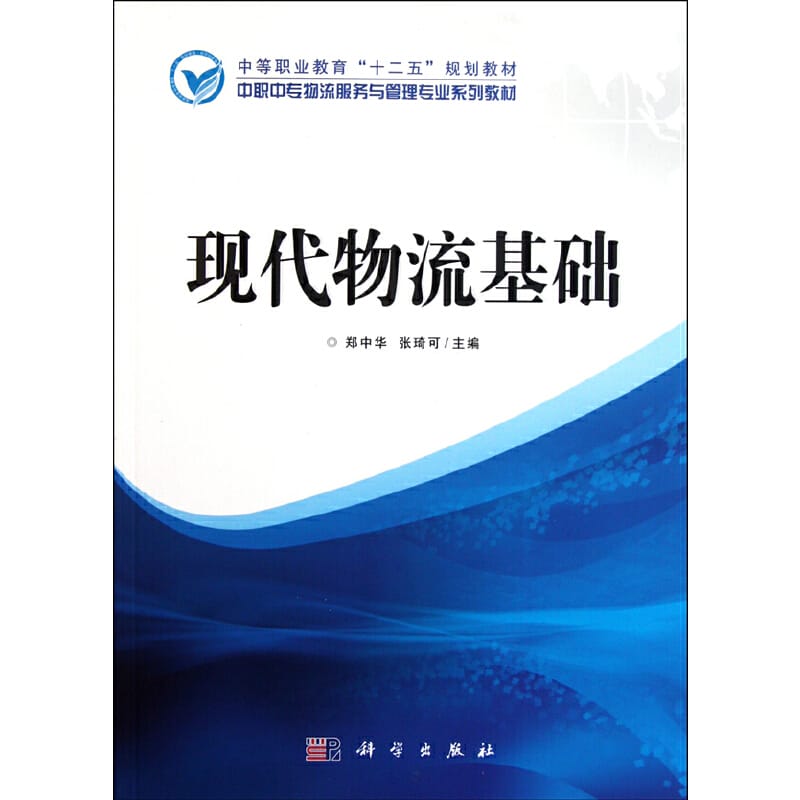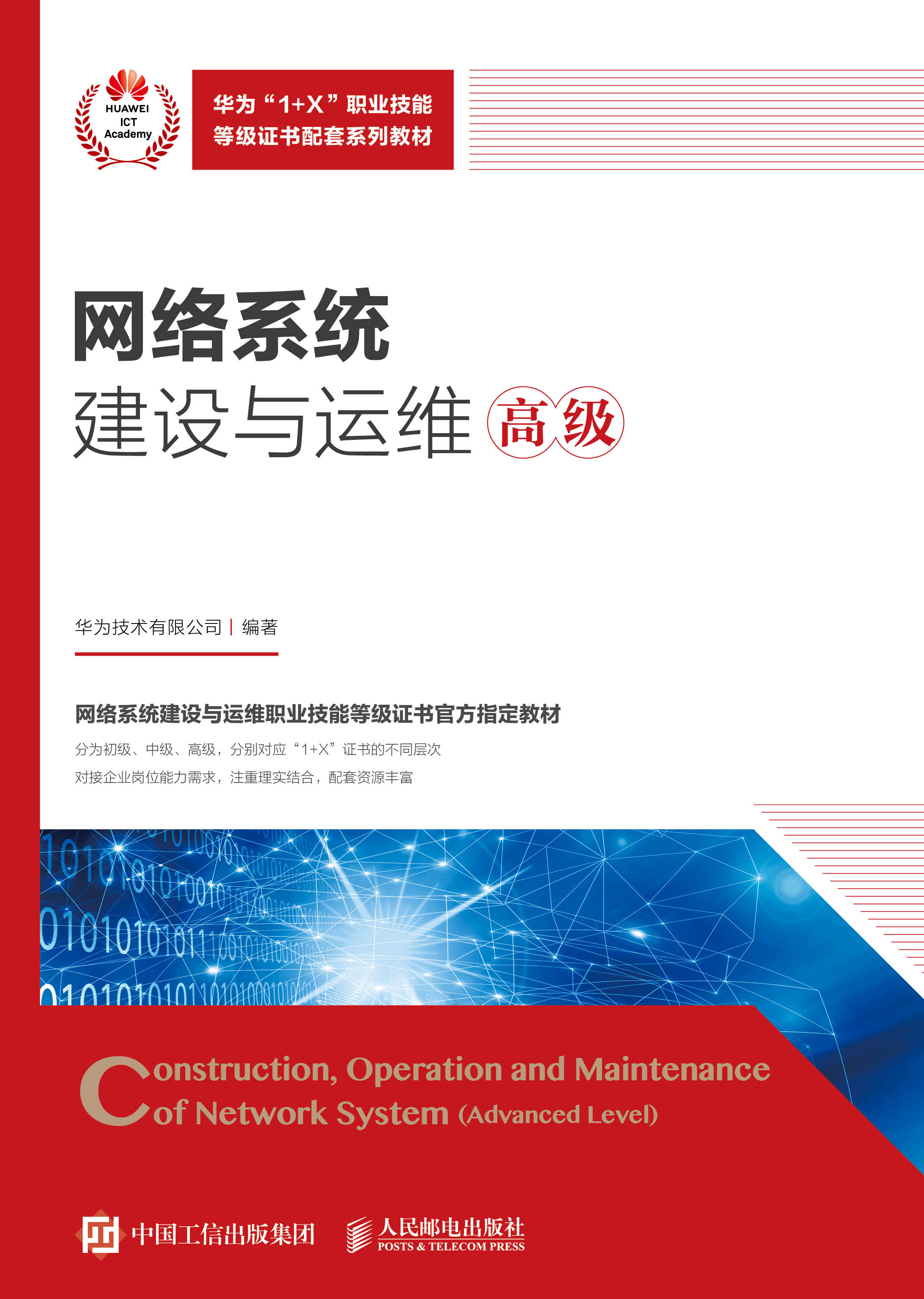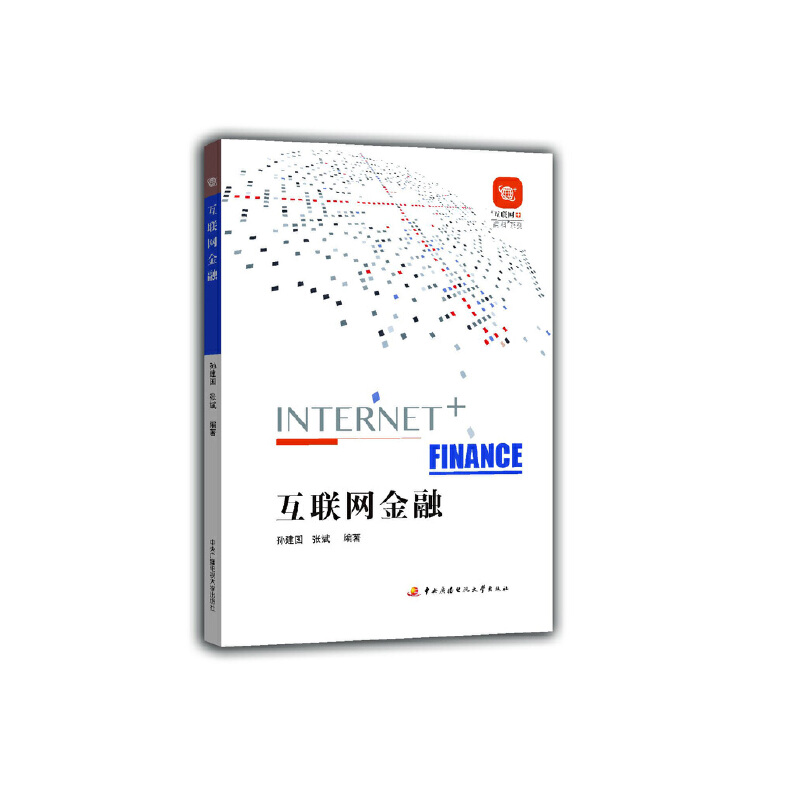- 机械工业出版社
- 9787111699347
- 1-2
- 431551
- 60258671-1
- 平装
- 大16开
- 2022-02
- 354
- 396
- 管理学
- 工商管理
- 物流工程
- 本科
内容简介
本书将物流放在供应链一体化框架之下,通过一体化的商业战略来扩展供应链管理的应用范围,并强调物流在协同供应链支持全球经济中的重要作用。本书阐述了为实现一体化物流管理所需的各项任务、业务流程和战略,力求在全球经济环境下对现有的物流实践进行全面的阐述,探讨如何通过运用物流原理实现企业的竞争优势,并将物流作为一种核心竞争力整合到企业供应链战略中。本书将预测和计划合并为单独的一章,把搬运及包装合并到仓储中,增加了物流和供应链管理的应用范围、价值链管理的相关概念、运输定价、物流和供应链管理未来的发展趋势等。
本书可作为高等院校物流管理、电子商务、工商管理、市场营销等专业本科生和研究生的教材,还可供MBA、EMBA学员以及物流管理、物流工程等相关从业人员学习参考。
本书可作为高等院校物流管理、电子商务、工商管理、市场营销等专业本科生和研究生的教材,还可供MBA、EMBA学员以及物流管理、物流工程等相关从业人员学习参考。
目录
前 言
第一部分 供应链物流管理
第1章 21世纪的供应链 2
1.1 供应链革命 3
1.2 一体化创造价值的原因 4
1.3 供应链的基本模型和应用 5
1.4 供应链定义与活动 8
1.5 一体化管理与供应链流程 9
1.6 供应链价值主张 14
1.7 响应性 15
1.8 全球化 18
1.9 产业扰动 19
本章小结 21
学习型思考题 22
挑战型思考题 22
第2章 供应链信息技术 23
2.1 信息系统功能 24
2.2 供应链信息系统的组成模块 27
2.3 物流运作模型 32
本章小结 33
学习型思考题 34
挑战型思考题 34
第3章 物流 35
3.1 物流业务的重要性 36
3.2 物流的价值主张 37
3.3 物流的职能工作 40
3.4 物流运作 45
3.5 物流整合目标 47
3.6 物流的运作模式 50
3.7 柔性结构 52
3.8 供应链的同步化 54
本章小结 58
学习型思考题 59
挑战型思考题 60
第4章 客户关系管理 61
4.1 以客户为中心的市场营销 62
4.2 客户服务 67
4.3 客户满意度 72
4.4 客户成功 78
4.5 客户关系管理策略 80
本章小结 84
学习型思考题 85
挑战型思考题 85
第二部分 供应链运作
第5章 一体化运作计划 88
5.1 供应链计划 89
5.2 供应链计划的应用 90
5.3 销售和运作计划 92
5.4 高级计划与排程系统概况 97
5.5 协同计划、预测和补货 104
5.6 预测 105
本章小结 117
学习型思考题 117
挑战型思考题 118
第6章 采购与制造 119
6.1 质量要求 120
6.2 采购的重要性 122
6.3 采购目标 123
6.4 采购策略 126
6.5 物流与采购的对接 131
6.6 制造 133
6.7 制造过程 133
6.8 制造策略与市场需求的匹配 135
6.9 制造策略 135
6.10 大规模定制 138
6.11 精益生产 139
6.12 六西格玛 139
6.13 面向物流的设计 140
本章小结 141
学习型思考题 141
挑战型思考题 142
第三部分 供应链物流运作
第7章 库存 144
7.1 库存的功能与定义 145
7.2 库存持有成本 151
7.3 库存计划 152
7.4 不确定性管理 158
7.5 库存管理策略 168
7.6 库存管理实践 180
本章小结 182
学习型思考题 183
挑战型思考题 183
第8章 运输 184
8.1 运输的作用和参与者 185
8.2 从运输管制到自由运输市场 188
8.3 运输的组成结构 190
8.4 专业化运输服务 197
8.5 运输的经济性与定价 201
8.6 运输运作管理 209
8.7 单据服务 213
8.8 产品定价与运输 215
本章小结 217
学习型思考题 218
挑战型思考题 218
第9章 仓储、物料搬运及包装 219
9.1 战略仓储 220
9.2 仓库所有权的分类 226
9.3 仓库决策 229
9.4 仓库运作 232
9.5 主要仓库作业 232
9.6 次要仓库作业 243
9.7 系统 246
9.8 包装作业的前景 249
9.9 包装提高物料搬运效率 251
本章小结 255
学习型思考题 255
挑战型思考题 256
第四部分 供应链物流设计
第10章 全球供应链 258
10.1 经济全球化 258
10.2 全球供应链一体化 260
10.3 国际采购 268
10.4 全球合规 272
本章小结 274
学习型思考题 274
挑战型思考题 275
第11章 网络设计 276
11.1 企业设施网络 277
11.2 仓库的要求 279
11.3 系统概念及分析 282
11.4 总成本整合 283
11.5 物流战略规划 293
11.6 物流网络设计的其他问题 298
11.7 计划方法 300
11.8 阶段Ⅰ:问题定义和计划 301
11.9 阶段Ⅱ:数据收集和分析 309
11.10 阶段Ⅲ:建议和实施 313
11.11 供应链原理的应用 315
本章小结 324
学习型思考题 325
挑战型思考题 325
第五部分 供应链的行政管理
第12章 协作关系管理 328
12.1 内部物流关系的开发与管理 329
12.2 发展和管理供应链协作关系 335
12.3 长期的供应链协作关系管理 340
本章小结 343
学习型思考题 344
挑战型思考题 344
第13章 绩效测量 345
13.1 测量系统目标 345
13.2 运作评价 346
13.3 财务评价 359
本章小结 368
学习型思考题 368
挑战型思考题 369
第14章 供应链的发展趋势 370
14.1 理解端到端的供应链管理 371
14.2 培养供应链管理人才 372
14.3 管理风险和复杂性 375
14.4 管理威胁和环境变化 378
14.5 理解安全、监管和合规环境 379
14.6 理解采购和总成本管理 380
本章小结 380
学习型思考题 381
挑战型思考题 381
后记 382
课后习题 / 案例集
Contents
Preface
PART ONE
SUPPLY CHAIN LOGISTICS MANAGEMENT 1
Chapter 1
21st-Century Supply Chains 2
The Supply Chain Revolution 3
Why Integration Creates Value 4
Generalized Supply Chain Model and Supply Chain Applications 5
Supply Chain Definitions and Activities 8
Integrative Management and Supply Chain Processes 9
Supply Chain Value Proposition 14
Responsiveness 15
Globalization 18
Industry Disruptors 19
Summary 21
Study Questions 22
Challenge Questions 22
Chapter 2
Supply Chain Information Technology 23
Information System Functionality 24
Supply Chain Information System Modules 27
Logistics Operations Modules 32
Summary 33
Study Questions 34
Challenge Questions 34
Chapter 3
Logistics 35
The Logistics of Business Is Big and Important 36
The Logistical Value Proposition 37
The Work of Logistics 40
Logistical Operations 45
Logistical Integration Objectives 47
Logistical Operating Arrangements 50
Flexible Structure 52
Supply Chain Synchronization 54
Summary 58
Study Questions 59
Challenge Questions 60
Chapter 4
Customer Accommodation 61
Customer-Focused Marketing 62
Customer Service 67
Customer Satisfaction 72
Customer Success 78
Developing Customer Accommodation Strategy 80
Summary 84
Study Questions 85
Challenge Questions 85
PART TWO
SUPPLY CHAIN OPERATIONS 87
Chapter 5
Integrated Operations Planning 88
Supply Chain Planning 89
Supply Chain Planning Applications 90
Sales and Operations Planning (S&OP) 92
APS System Overview 97
Collaborative Planning, Forecasting, and Replenishment 104
Forecasting 105
Summary 117
Study Questions 117
Challenge Questions 118
Chapter 6
Procurement and Manufacturing 119
The Quality Imperative 120
Procurement Importance 122
Procurement Objectives 123
Procurement Strategy 126
Logistical Interfaces with Procurement 131
Manufacturing 133
Manufacturing Processes 133
Matching Manufacturing Strategy to Market Requirements 135
Manufacturing Strategies 135
Mass Customization 138
Lean Systems 139
Six Sigma 139
Design-for-Logistics 140
Summary 141
Study Questions 141
Challenge Questions 142
PART THREE
SUPPLY CHAIN LOGISTICS OPERATIONS 143
Chapter 7
Inventory 144
Inventory Functionality and Definitions 145
Inventory Carrying Cost 151
Planning Inventory 152
Managing Uncertainty 158
Inventory Management Policies 168
Inventory Management Practices 180
Summary 182
Study Questions 183
Challenge Questions 183
Chapter 8
Transportation 184
Transport Functionality and Participants 185
From Regulation to a Free Market System 188
Transportation Modal Structure 190
Specialized Transportation Services 197
Transportation Economics and Pricing 201
Transportation Operations Management 209
Documentation 213
Product Pricing and Transportation 215
Summary 217
Study Questions 218
Challenge Questions.218
Chapter 9
Warehousing, Materials Handling, and Packaging 219
Strategic Warehousing 220
Warehouse Ownership Arrangements 226
Warehouse Decisions 229
Warehouse Operations 232
Primary Warehouse Operations 232
Secondary Warehouse Operations 243
Systems 246
Packaging Perspectives 249
Packaging for Handling Efficiency 251
Summary 255
Study Questions 255
Challenge Questions 256
PART FOUR
SUPPLY CHAIN LOGISTICS DESIGN 257
Chapter 10
Global Supply Chains 258
Global Economies 258
Global Supply Chain Integration 260
Global Sourcing 268
Global Compliance 272
Summary 274
Study Questions 274
Challenge Questions 275
Chapter 11
Network Design 276
Enterprise Facility Network 277
Warehouse Requirements 279
Systems Concept and Analysis 282
Total Cost Integration 283
Formulating Logistical Strategy 293
Other Considerations in Logistics Network Design 298
Planning Methodology 300
Phase I: Problem Definition and Planning 301
Phase II: Data Collection and Analysis 309
Phase III: Recommendations and Implementation 313
Application of Supply Chain Principles 315
Summary 324
Study Questions 325
Challenge Questions 325
PART FIVE
SUPPLY CHAIN LOGISTICS
ADMINISTRATION 327
Chapter 12
Relationship Management 328
Development and Management of Internal Logistics Relationships 329
Development and Management of Supply Chain Relationships 335
Managing Supply Chain Relationships over Time 340
Summary 343
Study Questions 344
Challenge Questions 344
Chapter 13
Performance Measurement 345
Measurement System Objectives 345
Operational Assessment.346
Financial Assessment 359
Summary 368
Study Questions 368
Challenge Questions 369
Chapter 14
Supply Chain Trends 370
Understanding End-to-End Supply Chain Management 371
Developing Supply Chain Management Talent 372
Managing Risk and Complexity 375
Managing Threats and Environmental Changes 378
Understanding the Security, Regulatory, and Compliance Environment 379
Understanding Purchasing and Total Cost Management 380
Summary 380
Study Questions 381
Challenge Questions 381
Epilogue 382
Problems/Cases 384
第一部分 供应链物流管理
第1章 21世纪的供应链 2
1.1 供应链革命 3
1.2 一体化创造价值的原因 4
1.3 供应链的基本模型和应用 5
1.4 供应链定义与活动 8
1.5 一体化管理与供应链流程 9
1.6 供应链价值主张 14
1.7 响应性 15
1.8 全球化 18
1.9 产业扰动 19
本章小结 21
学习型思考题 22
挑战型思考题 22
第2章 供应链信息技术 23
2.1 信息系统功能 24
2.2 供应链信息系统的组成模块 27
2.3 物流运作模型 32
本章小结 33
学习型思考题 34
挑战型思考题 34
第3章 物流 35
3.1 物流业务的重要性 36
3.2 物流的价值主张 37
3.3 物流的职能工作 40
3.4 物流运作 45
3.5 物流整合目标 47
3.6 物流的运作模式 50
3.7 柔性结构 52
3.8 供应链的同步化 54
本章小结 58
学习型思考题 59
挑战型思考题 60
第4章 客户关系管理 61
4.1 以客户为中心的市场营销 62
4.2 客户服务 67
4.3 客户满意度 72
4.4 客户成功 78
4.5 客户关系管理策略 80
本章小结 84
学习型思考题 85
挑战型思考题 85
第二部分 供应链运作
第5章 一体化运作计划 88
5.1 供应链计划 89
5.2 供应链计划的应用 90
5.3 销售和运作计划 92
5.4 高级计划与排程系统概况 97
5.5 协同计划、预测和补货 104
5.6 预测 105
本章小结 117
学习型思考题 117
挑战型思考题 118
第6章 采购与制造 119
6.1 质量要求 120
6.2 采购的重要性 122
6.3 采购目标 123
6.4 采购策略 126
6.5 物流与采购的对接 131
6.6 制造 133
6.7 制造过程 133
6.8 制造策略与市场需求的匹配 135
6.9 制造策略 135
6.10 大规模定制 138
6.11 精益生产 139
6.12 六西格玛 139
6.13 面向物流的设计 140
本章小结 141
学习型思考题 141
挑战型思考题 142
第三部分 供应链物流运作
第7章 库存 144
7.1 库存的功能与定义 145
7.2 库存持有成本 151
7.3 库存计划 152
7.4 不确定性管理 158
7.5 库存管理策略 168
7.6 库存管理实践 180
本章小结 182
学习型思考题 183
挑战型思考题 183
第8章 运输 184
8.1 运输的作用和参与者 185
8.2 从运输管制到自由运输市场 188
8.3 运输的组成结构 190
8.4 专业化运输服务 197
8.5 运输的经济性与定价 201
8.6 运输运作管理 209
8.7 单据服务 213
8.8 产品定价与运输 215
本章小结 217
学习型思考题 218
挑战型思考题 218
第9章 仓储、物料搬运及包装 219
9.1 战略仓储 220
9.2 仓库所有权的分类 226
9.3 仓库决策 229
9.4 仓库运作 232
9.5 主要仓库作业 232
9.6 次要仓库作业 243
9.7 系统 246
9.8 包装作业的前景 249
9.9 包装提高物料搬运效率 251
本章小结 255
学习型思考题 255
挑战型思考题 256
第四部分 供应链物流设计
第10章 全球供应链 258
10.1 经济全球化 258
10.2 全球供应链一体化 260
10.3 国际采购 268
10.4 全球合规 272
本章小结 274
学习型思考题 274
挑战型思考题 275
第11章 网络设计 276
11.1 企业设施网络 277
11.2 仓库的要求 279
11.3 系统概念及分析 282
11.4 总成本整合 283
11.5 物流战略规划 293
11.6 物流网络设计的其他问题 298
11.7 计划方法 300
11.8 阶段Ⅰ:问题定义和计划 301
11.9 阶段Ⅱ:数据收集和分析 309
11.10 阶段Ⅲ:建议和实施 313
11.11 供应链原理的应用 315
本章小结 324
学习型思考题 325
挑战型思考题 325
第五部分 供应链的行政管理
第12章 协作关系管理 328
12.1 内部物流关系的开发与管理 329
12.2 发展和管理供应链协作关系 335
12.3 长期的供应链协作关系管理 340
本章小结 343
学习型思考题 344
挑战型思考题 344
第13章 绩效测量 345
13.1 测量系统目标 345
13.2 运作评价 346
13.3 财务评价 359
本章小结 368
学习型思考题 368
挑战型思考题 369
第14章 供应链的发展趋势 370
14.1 理解端到端的供应链管理 371
14.2 培养供应链管理人才 372
14.3 管理风险和复杂性 375
14.4 管理威胁和环境变化 378
14.5 理解安全、监管和合规环境 379
14.6 理解采购和总成本管理 380
本章小结 380
学习型思考题 381
挑战型思考题 381
后记 382
课后习题 / 案例集
Contents
Preface
PART ONE
SUPPLY CHAIN LOGISTICS MANAGEMENT 1
Chapter 1
21st-Century Supply Chains 2
The Supply Chain Revolution 3
Why Integration Creates Value 4
Generalized Supply Chain Model and Supply Chain Applications 5
Supply Chain Definitions and Activities 8
Integrative Management and Supply Chain Processes 9
Supply Chain Value Proposition 14
Responsiveness 15
Globalization 18
Industry Disruptors 19
Summary 21
Study Questions 22
Challenge Questions 22
Chapter 2
Supply Chain Information Technology 23
Information System Functionality 24
Supply Chain Information System Modules 27
Logistics Operations Modules 32
Summary 33
Study Questions 34
Challenge Questions 34
Chapter 3
Logistics 35
The Logistics of Business Is Big and Important 36
The Logistical Value Proposition 37
The Work of Logistics 40
Logistical Operations 45
Logistical Integration Objectives 47
Logistical Operating Arrangements 50
Flexible Structure 52
Supply Chain Synchronization 54
Summary 58
Study Questions 59
Challenge Questions 60
Chapter 4
Customer Accommodation 61
Customer-Focused Marketing 62
Customer Service 67
Customer Satisfaction 72
Customer Success 78
Developing Customer Accommodation Strategy 80
Summary 84
Study Questions 85
Challenge Questions 85
PART TWO
SUPPLY CHAIN OPERATIONS 87
Chapter 5
Integrated Operations Planning 88
Supply Chain Planning 89
Supply Chain Planning Applications 90
Sales and Operations Planning (S&OP) 92
APS System Overview 97
Collaborative Planning, Forecasting, and Replenishment 104
Forecasting 105
Summary 117
Study Questions 117
Challenge Questions 118
Chapter 6
Procurement and Manufacturing 119
The Quality Imperative 120
Procurement Importance 122
Procurement Objectives 123
Procurement Strategy 126
Logistical Interfaces with Procurement 131
Manufacturing 133
Manufacturing Processes 133
Matching Manufacturing Strategy to Market Requirements 135
Manufacturing Strategies 135
Mass Customization 138
Lean Systems 139
Six Sigma 139
Design-for-Logistics 140
Summary 141
Study Questions 141
Challenge Questions 142
PART THREE
SUPPLY CHAIN LOGISTICS OPERATIONS 143
Chapter 7
Inventory 144
Inventory Functionality and Definitions 145
Inventory Carrying Cost 151
Planning Inventory 152
Managing Uncertainty 158
Inventory Management Policies 168
Inventory Management Practices 180
Summary 182
Study Questions 183
Challenge Questions 183
Chapter 8
Transportation 184
Transport Functionality and Participants 185
From Regulation to a Free Market System 188
Transportation Modal Structure 190
Specialized Transportation Services 197
Transportation Economics and Pricing 201
Transportation Operations Management 209
Documentation 213
Product Pricing and Transportation 215
Summary 217
Study Questions 218
Challenge Questions.218
Chapter 9
Warehousing, Materials Handling, and Packaging 219
Strategic Warehousing 220
Warehouse Ownership Arrangements 226
Warehouse Decisions 229
Warehouse Operations 232
Primary Warehouse Operations 232
Secondary Warehouse Operations 243
Systems 246
Packaging Perspectives 249
Packaging for Handling Efficiency 251
Summary 255
Study Questions 255
Challenge Questions 256
PART FOUR
SUPPLY CHAIN LOGISTICS DESIGN 257
Chapter 10
Global Supply Chains 258
Global Economies 258
Global Supply Chain Integration 260
Global Sourcing 268
Global Compliance 272
Summary 274
Study Questions 274
Challenge Questions 275
Chapter 11
Network Design 276
Enterprise Facility Network 277
Warehouse Requirements 279
Systems Concept and Analysis 282
Total Cost Integration 283
Formulating Logistical Strategy 293
Other Considerations in Logistics Network Design 298
Planning Methodology 300
Phase I: Problem Definition and Planning 301
Phase II: Data Collection and Analysis 309
Phase III: Recommendations and Implementation 313
Application of Supply Chain Principles 315
Summary 324
Study Questions 325
Challenge Questions 325
PART FIVE
SUPPLY CHAIN LOGISTICS
ADMINISTRATION 327
Chapter 12
Relationship Management 328
Development and Management of Internal Logistics Relationships 329
Development and Management of Supply Chain Relationships 335
Managing Supply Chain Relationships over Time 340
Summary 343
Study Questions 344
Challenge Questions 344
Chapter 13
Performance Measurement 345
Measurement System Objectives 345
Operational Assessment.346
Financial Assessment 359
Summary 368
Study Questions 368
Challenge Questions 369
Chapter 14
Supply Chain Trends 370
Understanding End-to-End Supply Chain Management 371
Developing Supply Chain Management Talent 372
Managing Risk and Complexity 375
Managing Threats and Environmental Changes 378
Understanding the Security, Regulatory, and Compliance Environment 379
Understanding Purchasing and Total Cost Management 380
Summary 380
Study Questions 381
Challenge Questions 381
Epilogue 382
Problems/Cases 384















